In Newcastle, shipbuilding was inherently linked to the coal mining for which the city became famous. (The phrase ‘carry coals to Newcastle’ is still used to refer to doing something pointless.)
As suggested by these postcards, dating from the early 1900s, the industry and the river Tyne became synonymous with Newcastle and Gateshead.
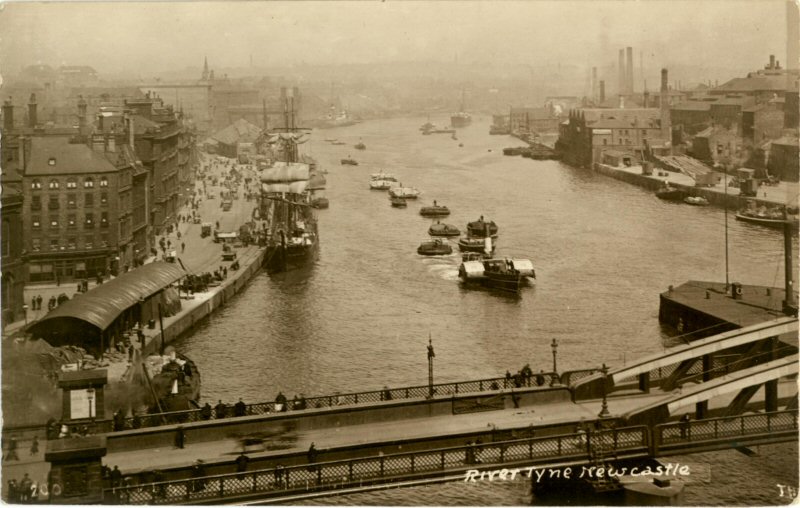
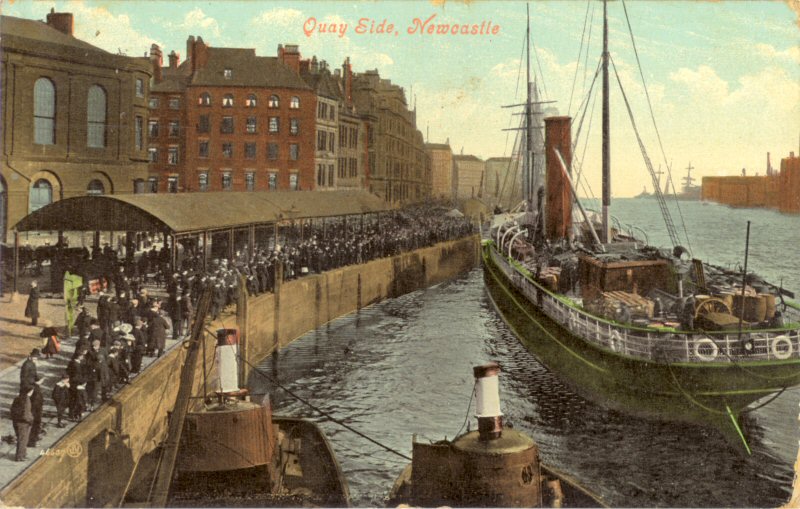
(Pictures courtesy of Andy Williamson, http://www.picturesofgateshead.co.uk/)
A shipwright’s guild was founded in the early 17th century, but the industrial revolution brought many new challenges, to which local shipbuilders and engineers responded. The first steam paddle boat, the Tyne Steam Packet was launched 21 February 1814, and was used to carry passengers between Newcastle and the coast.
Ships of iron
Iron shipbuilding was pioneered on the Tyne. In 1839, Thomas Marshall launched The Star, thought to be the first iron-hulled steamer on the river, and in 1842 his yard at South Shields built The Bedlington, the world’s first steam collier. Colliers were ships that transported coal - this one carried coal from the River Blyth down to the mouth of the Tyne where they were loaded onto sailing ships.
Most of the ships built during the 19th century were sailing ships, although iron was increasingly used. Along with transport vessels for coal and other goods, passenger ships were needed to take emigrants to America and Australia.
Rivals by rail
After Newcastle engineer George Stephenson invented the world’s first steam train, transporting coal over land became quicker and cheaper. Unfortunately for the Newcastle coal merchants, this meant that they found it harder to compete with coal mines in the English Midlands and Yorkshire, which could now transport their goods to London by rail. In 1852, industrialists Charles and George Palmer established the General Iron Screw Collier Company, and launched the John Bowes, a ship which revolutionised coal transport. These new ships could make the return journey from Newcastle to London within five days, where previously it had taken a month. They also required less workers than the sailing colliers.
A downside of the new steam colliers was that they used water instead of solid ballast materials to weight down the empty ships. This affected the local chemical, pottery and glass industries.
Industry innovations
During this period, engineers from the Tyne led the way in terms of innovation..png) This photo shows the frames of the Russian icebreaking train ferry Baikal at Armstrong Mitchell’s Low Walker Yard in c.1895-1896. The ship was assembled on the slipway, then dismantled and shipped to Russia where it was reconstructed and launched in 1899 (picture courtesy of Newcastle Libraries).
This photo shows the frames of the Russian icebreaking train ferry Baikal at Armstrong Mitchell’s Low Walker Yard in c.1895-1896. The ship was assembled on the slipway, then dismantled and shipped to Russia where it was reconstructed and launched in 1899 (picture courtesy of Newcastle Libraries).
Shipyard workers often lived close to the yard. This meant that in certain areas along the river, the majority of families were reliant on shipbuilding for their livelihood in one way or another. This could have disastrous consequences in times when demand for ships was low.
The Jarrow Crusade
For example, when the famous Palmers yard in Jarrow was closed in 1933, more than 7,000 people were unemployed – 70% of the town’s workforce!
.png)
.png)
(Photographs courtesy of South Shields Museum & Art Gallery, Tyne & Wear Archives & Museums.)
There were so many unemployed people, that 200 workers from Jarrow decided to march to London to raise awareness and public sympathy in the hopes the government would intervene. Read this article about the Jarrow March and its impact.
Although the Jarrow March was not successful, in terms of influencing the government, in the late 1930s rearmament began, as people realised war was looming and the remaining shipyards were busy again.
The Fight to Save Swan Hunter
After the Shipbuilding Inquiry Committee 1965-1966 Report (known as the Geddes Report), all the main Tyne shipbuilders amalgamated into the Swan Hunter Group, which was nationalised as part of British Shipbuilding in 1977. However, yards were gradually closed until by the end of the 1980s only the Wallsend Swan Hunter yard remained. In 1985 Swan Hunters was re-privitised, when managers bought the yard from the government.
 Swan Hunter was officially designated a warship builder, which meant they weren’t eligible for certain European Union subsidies to build merchant ships. The end of the Cold War led to a serious downturn in the need for warships, and despite a fierce local campaign to save the yard, in 1993 the receivers were called in. At the last minute, the famous Wallsend shipyard was saved by Dutch millionaire Jaap Kroese and continued for another decade. Their machinery was sold to an Indian firm in the mid 2000s, and the last two giant cranes were demolished in 2010.
Swan Hunter was officially designated a warship builder, which meant they weren’t eligible for certain European Union subsidies to build merchant ships. The end of the Cold War led to a serious downturn in the need for warships, and despite a fierce local campaign to save the yard, in 1993 the receivers were called in. At the last minute, the famous Wallsend shipyard was saved by Dutch millionaire Jaap Kroese and continued for another decade. Their machinery was sold to an Indian firm in the mid 2000s, and the last two giant cranes were demolished in 2010.
A changed landscape
Whereas 50 years ago, shipbuilding, ship repair and marine engineering firms dominated the edge of the River Tyne, now little remains. Most of the yards were demolished as soon as they closed - although the shipbuilding heritage is still visible on the Tyne's bridges. The industry also remains in people’s memories, and is an important part of the Story of the Tyne gallery at the Discovery Museum.
You can see how Tyneside has changed in this community documentary, Men of the Tyne, created as part of a reminiscence project run by the Customs House in South Shields.

Audrey Nichols, tack welder at Swan Hunter (Wallsend) during WW2
(External link)
Oral history recording with Audrey Nichols, where she describes her wartime experience working as a tack welder at Swan Hunter.
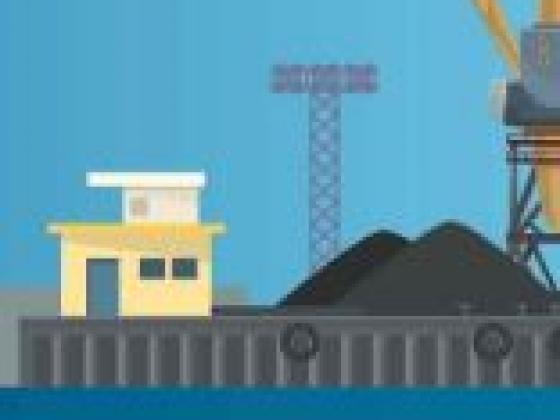
Dennis Brennan, Draughtsman on the Tyne
(External link)
Oral history recording with Dennis Brennan as part of the Millennium Memory Bank. Dennis remembers his involvement as a young draughtsman with the design of an improved crane for a small shipyard on the Tyne in 1961. He paints a vivid picture of the hive of activity on the river at that time.

Northumberland Archives: Child Evacuees
(External link)
During the war years, many children were evacuated from areas on the Tyne, such as Wallsend, because of the shipyards made them a target for enemy bombs. If you visit the Northumberland Archives, you can listen to a collection of oral histories with child evacuees from along the Tyne shipyard areas (T/475 - T493).

A Ship There Was
(External link)
A Ship There Was (1952) is a docu-drama produced for the National Savings Committee. It tells the fictional story of a shipyard worker who is convinced to give up his own dreams to use his savings for his son's education. The film includes footage of the Ocean Monarch, built at Vickers Armstrong in Newcastle, 1951.
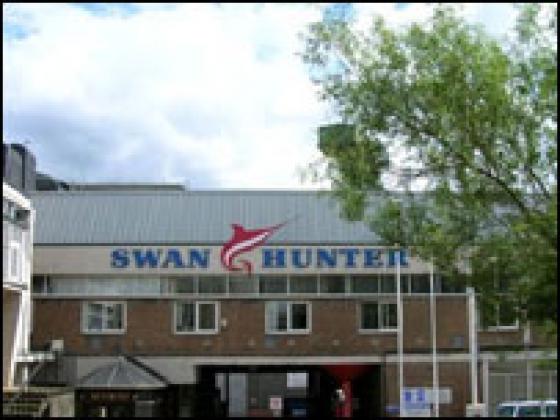
BBC: Remembering Swan Hunter
(External link)
The BBC has an archived website dedicated to memory of the Swan Hunter shipyards.
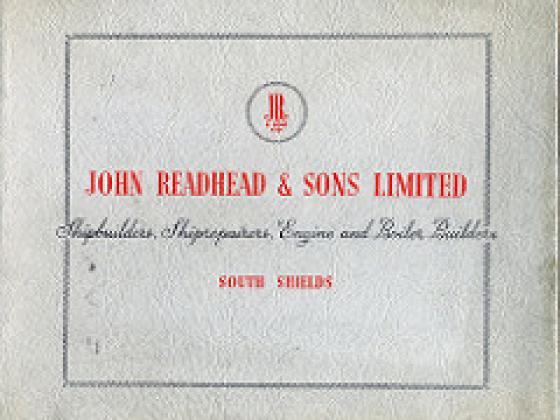
John Readhead and Sons 80th Anniversary Album
(External link)
Flickr version of an album created in 1948 to mark 80 years of the John Readhead and Sons shipbuilding firm in South Shields.
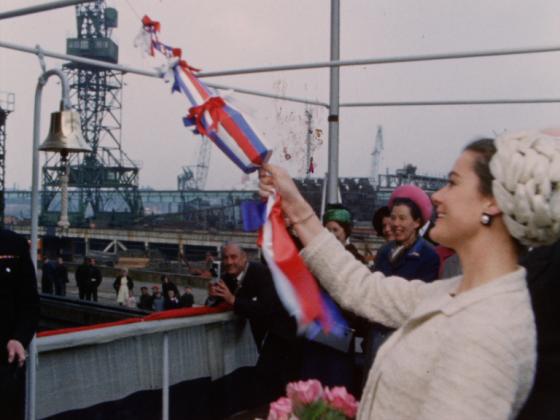
Launch of the MV Clerk-Maxwell 6th May 1966
(External link)
Launch of the MV Clerk-Maxwell" 6th May 1966 (1966). A silent film of the launching ceremony of tanker MV Clerk-Maxwell from Hawthorn Leslie in Hebburn.

Shipbuilding on the Tyne: Photographs of Bruce Rae
(External link)
An online collection of 33 photographs of shipbulding on the Tyne, commissioned in the early 1980s. Hosted by the Amber Collective.

Tyneside Story
(External link)
Tyneside Story (1944) is a dramatisation of the re-opening of Tyneside shipyards at the start of the Second World War after being closed during the depression.